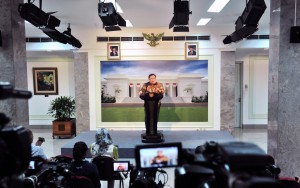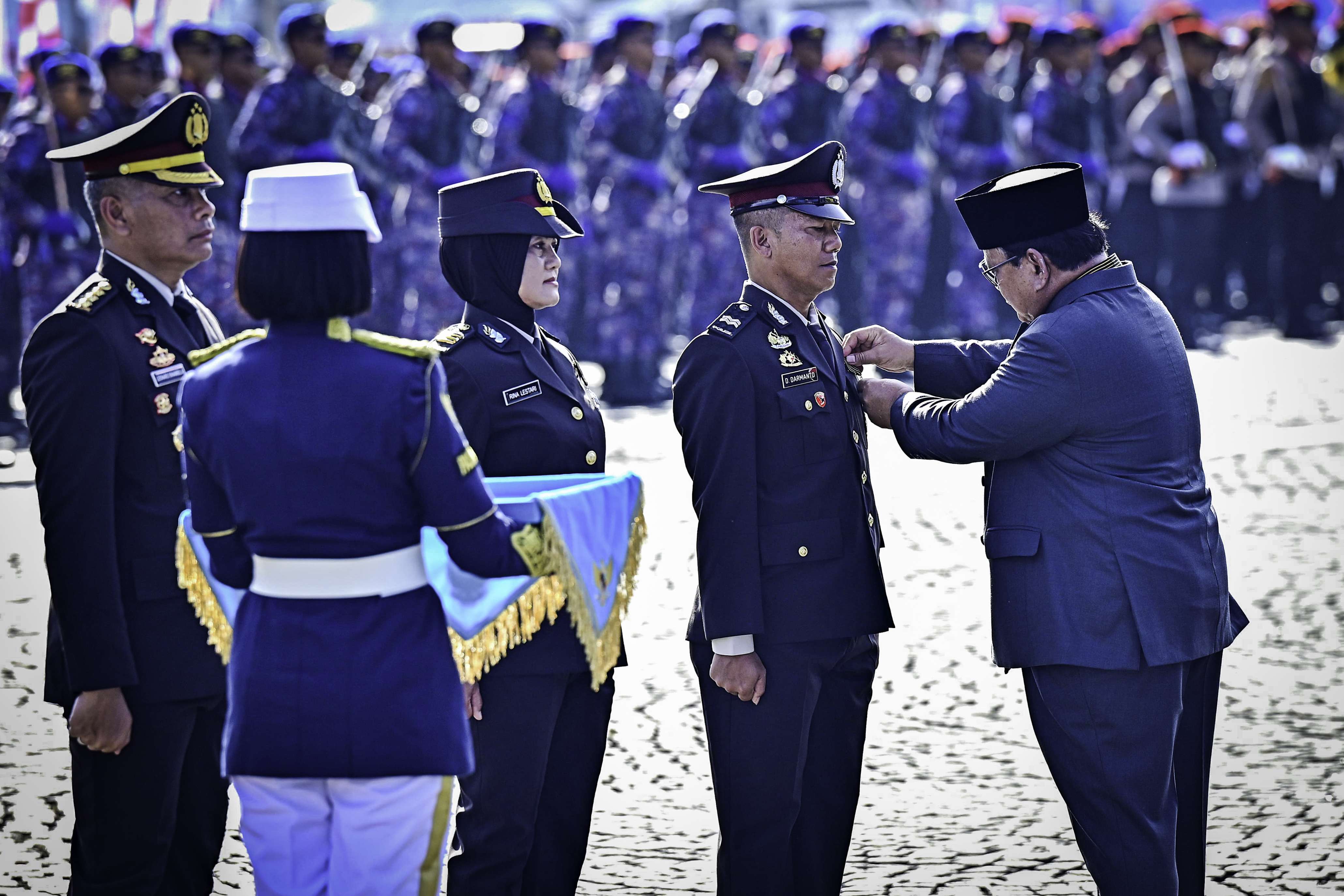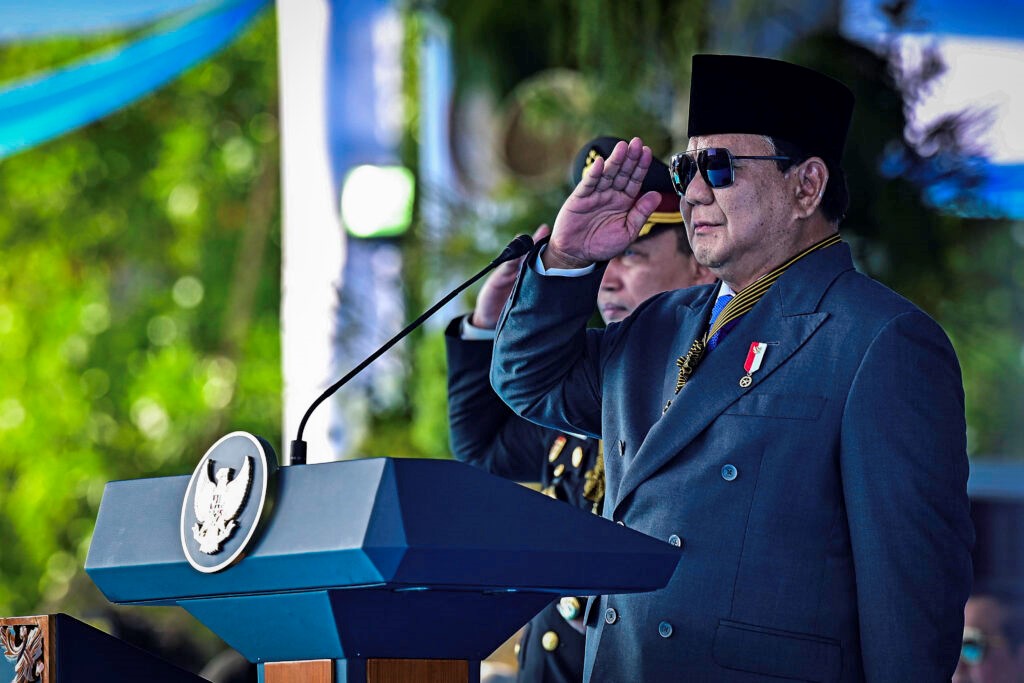Bappenas Proposes Plan to Move Capital Out of Java

Minister of National Development Planning (PPN)/Head of the National Development Planning Agency (Bappenas) Bambang Brodjonegoro delivers a press statement after the Limited Meeting, at the President’s Office, Jakarta, Monday (29/4). (Photo by: Jay/PR)
Minister of National Development Planning (PPN)/Head of the National Development Planning Agency (Bappenas) Bambang Brodjonegoro disclosed three alternatives for capital city relocation during the Limited Cabinet Meeting on the Follow-up Plan for the Relocation of Capital City, at the President’s office, Jakarta, Monday (29/4).
The first alternative is to build a government district in the area of the Palace and the National Monument. The district consists of Government offices, particularly for the government Ministries and Institutions.
“The first alternative requires us to change the designation in the area around the Palace and the National Monument,” Bambang explained, adding that the consequences of this move would be to further strengthen Jakarta as the center of Indonesia and affect urbanization and economic growth.
The second alternative is to move the Government seat to an area near Jakarta. This move is similar to the Putra Jaya case in Malaysia. The consequence, according to the Minister, is that the Indonesian economy will still be centered in Jakarta Metropolitan area.
The last alternative is to move the Government out of Java Island. The Minister pointed out countries such as Brazil, Australia, Kazakhstan, and Myanmar as examples. Brazil has moved its capital city from Rio de Janeiro to Brasilia. Australia’s capital city, Canberra, is located between Sydney and Melbourne. Kazakhstan’s capital city Astana, as well as Myanmar’s capital city Naypyidaw, is located in the middle area of the country.
According to Bambang, the first alternative requires that the connectivity must be supported by Light Rail Transit (LRT) or monorail to ease the movement among the people in Ministries/Institutions around the Palace and the National Monument.
The second alternative requires that the new capital city should be 50 to 70 km from Jakarta. The proposed locations for this option are Jonggol (West Java) or Maja (Banten).
“The third alternative, we move the capital city out of Java. We want to further spread the Indonesian economy from Java, that currently contributes 58% of the GDP, to outside Java,” Bambang explained, adding that the main requirements are the availability of vast land to build a new city, large amount of funds, and the willingness of the civil servants resided in Jakarta to move to the new city.
From the aforementioned options, Bambang proposed to move the capital city out of Java, precisely in the middle of Indonesia’s territory.
(To move it in) the middle is to represent justice and encourage the development acceleration in the eastern region of Indonesia. So, we encourage an Indonesia-centric capital city,” he said, adding that there was already a large amount of land owned by the Government and SoEs available to be built. This will reduce the land acquisition cost.
The area (for the new capital) should be free from earthquakes, volcanoes, tsunamis, floods, erosion, forest fires, and peatland fires. The location should have low risk of disaster, have adequate water resources, and should be free from environmental pollution.
On that occasion, Bambang also proposed the existing middle-class city as the new capital city to reduce initial infrastructure investment.
“The city should have access to mobility or logistics, so we do not need to build a new airport in the city. We can use the existing airports as well as ports and some connecting roads, ” Bambang said.
The Minister further proposed that the city should not be far from the coast while not necessarily located by the beach, because Indonesia is a maritime country. He also emphasized the adequacy of drinking water, sanitation, electricity, and communication networks.
The Minister also expressed his hope to minimize the potential of social conflicts and expected the communities around the area have an open culture to migrants. This is to anticipate the arriving civil servants from Jakarta.
“We hope that there will be no negative impact on the local community. Then, we must ensure that the perimeter is appropriate for our defense security We must minimize the state vulnerability and protect its territorial area. We should choose a location that is not close to the country’s border areas,” Bambang said. (FID/JAY/ES)
Translated by : Fairuzzamani Inayatillah
Edited by : Ridwan Ibadurrohman, Yuyu Mulyani








